Virtual CIO Standards
& Training Manual
Your all-in-one guide to creating and managing the proven vCIO process
that has helped hundreds of MSPs build World Class businesses.
Intro
The Winds of Change are
Changing
Do you refer to yourself as an MSP? Are your consultants more virtual Captain Obvious (vCO) and less virtual Chief Information Officer (vCIO)? And do you tell your customers you have better tools than your competitors, but use the same set? If you answered these questions with a resounding “Yes!” then you should keep reading.
The technology market has changed.
As small businesses look to outsource IT, more Managed Services Providers spring up. The average seats per customer have increased. The market must keep up with this trend to offer proper solutions at the right price.
Before MSPs went mainstream, IT companies operated on the break/fix model. Reactive service was often sold using pre-allocated blocks of time or billed hourly. Technology consultants would meet with clients to state the obvious: hardware X is broken and it will cost Y to fix it. With the evolution of small business needs, this model no longer worked. Enter the Managed Services Provider, offering proactive support and consulting for a monthly cost. At the time this seemed the be-all and end-all of IT services for businesses.
But what if there is more? What if the MSP is changing, offering more than proactive support and consulting? What if vCO has evolved into vCIO and partners with Decision Makers? Is it possible to improve the business relationship and not only the technology? TruMethods transformed break/fix providers into top-performing MSPs and will lead them in the new frontier. Begin your journey towards the next step in World Class as a Technology Success Provider.
Section 1
Beyond MSP: The Next
Evolution for IT Providers
When your business is break/fix oriented, things are simpler. As long as you keep billing your clients, they keep paying, and you keep fixing, the process works. Reactive service is unforgiving and people dependent; separating from the competition is difficult. A bad week turns into a bad month which leads to a bad quarter and likely a bad year. It soon becomes clear things have to change. You need to leave the break/fix model and begin the journey to MSP.
The idea of entering the MSP market is to create value for customers by managing technology. This creates a recurring revenue business model providing a monthly stream of revenue. The addition of new tools and features make an MSP more attractive to customers. But the market has yet again changed.
The MSP market was soon flooded with technology companies touting their proactive approach. Adding tools to support the growing number of small businesses was common. Additionally, an increase in end users demands for a higher cost per seat. Remote Monitoring and Management, backup & disaster recovery, and antivirus required more than words on paper; they needed to be an MSP Practice.
The MSP Practice has more focus on specific roles, processes, workflow, and metrics. Both MSP and customer outcomes tie in these items. The customer saw more value in an MSP Practice versus generic proactive services. Service providers began broadcasting how they were better than their competitors. At TruMethods, we gave MSPs some advantages they can add to their MSP Practice. Managing outcomes, 4 Blocks, and 5 Qualities of World Class are examples of how the average MSP elevates above its competitors. Now it’s time to begin a new adventure towards Technology Success.
Section 2
Introducing the
Technology Success
Provider
The Technology Success Practice (TSP) is the top layer on the business model.
The business of break/ fix shifted to the proactive management of technology. It has now pivoted to Delivering Outcomes of client business success. Fixing and managing technology is no longer enough and must now focus on the success of the client. Managing outcomes requires four pieces of the practice: Standards, Alignment, Impact, and Strategy. Ongoing strategy with customers will be a business relationship addressing their changing needs.
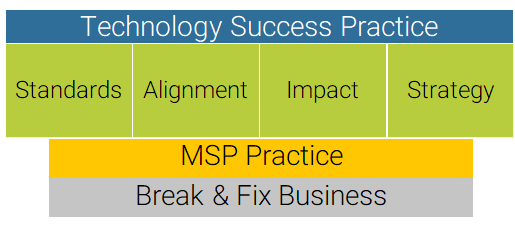
Building a strategic relationship depends on how customers view your services. If their Selling, General & Administrative (SG&A) costs include IT then it is a generic expense. Every dollar not spent on SG&A is another dollar of profit. To compete in their market they must perceive technology as a strategic advantage.
A strategic business relationship provides leverage over a customer’s technology. The client is desperate to understand how to make technology a functional area. A TSP understands the goals, challenges, and opportunities for building a strategic relationship.
Delivery areas of Support, Centralized Services, and Professional Services have low perceived value. Every MSP in the market has a variation of these areas to call themselves proactive. A TSP is set apart by Technical Alignment and vCIO, the building blocks of Technology Success.
Technology Alignment is performing an objective review of a customer’s IT environment. Performing reviews consists of defining standards and aligning customers against them. Creating a Standards Library requires contributions from other delivery areas while a Standards Committee adds, changes, or removes best practices from this repository. A Technology Alignment Manager (TAM) is a dedicated resource to create a one on one technical relationship.
Section 3
Are You a Virtual Captain
Obvious?
A virtual Captain Obvious portrays a ‘trusted adviser’ by offering generic industry advice.
Your servers are old; replace them. Your email is outdated; move to the cloud. Your license expired; renew it. This is advice that any MSP could offer. Meetings occur with a customer point of contact rather than a decision maker. A point of contact will impede progress by preventing the approval of projects. A vCO reviews irrelevant data like ticket reports, patch status summaries, and licensing.
A vCIO goes above and beyond the function of being a trusted adviser or consultant. True vCIO is the understanding of technical risk and business impact. Client Strategy combines budgeting and planning techniques to recommend solutions to the client. Leveraging technical alignment gives you greater control over your customer’s decisions.
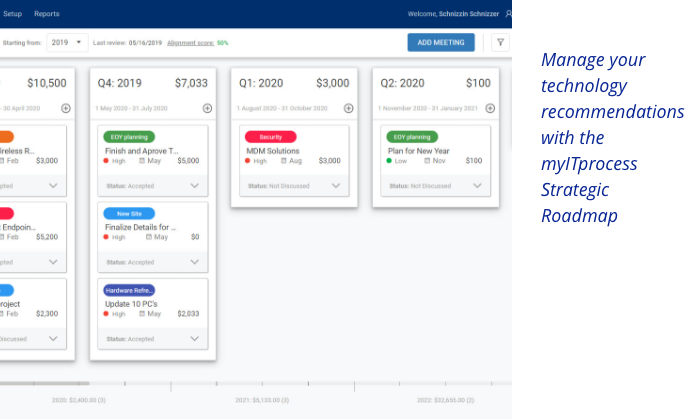
True vCIO is a strategic relationship which focuses on client strategy. Shifting from a technical to business relationship addresses the business impact of technology. Decision makers understand company goals, challenges, and risks which affect Business Impact. Business Impact and Client Strategy are the foundation of the vCIO role. Technical alignment reviews allow focus on long- term business goals. A thorough business canvassing can pinpoint priority areas and deliver recommendations.
Performing vCIO is paramount to strong business relationships with each decision maker. The Technology Success Practice generates higher margin monthly recurring revenue. Shifting from MSP to TSP allows the vCIO to address a customer’s needs rather than offering stale advice.
Section 4
Technology Success Culture
A Technology Success Culture defines how customers perceive their quality of support. A positive culture will radiate and make a positive impact on customer satisfaction. There is more to a TSPs Technology Success Culture than vCIO. Parts of the system will fail without proper balance.
A Technology Success Culture revolves around standards, best practices, and processes. Although a TAM is central to technical alignment, they are not alone. Support Desk, Centralized Services, vCIO, and Professional Services work together to create a World Class culture.
Onboarding is the first step towards customer technical alignment. It uses base-level standards implementation to get clients added to a Professional Services Automation (PSA) system. It also includes deploying remote agents and completing documentation. The onboarding process is not designed to align your customers from day one. It introduces a gradual alignment increase with each onsite visit. Analysis paralysis will set in if attempting standards alignment all at once. When excessive options are available from the start, actions are never taken.
Section 5
The Essence of Virtual CIO
The Core of vCIO includes Math (measurable drivers) and the Process (priorities, steps, and tasks). The Results are the impact on the client, business, and the person in the role. The Essence is the spirit that ties the Core to the Results.
Metrics provides the benefit of measuring data over time. Metrics collect source data including tickets solved, client turnover, or total projects completed. They provide valuable insight into company performance. This makes it easier to adjust for the future using knowledge from the past.
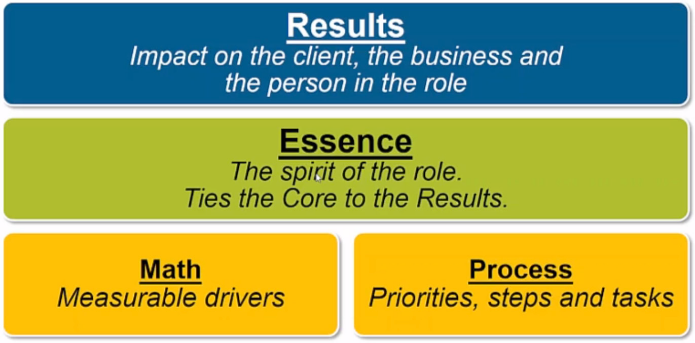
The Core
The Core includes measurable drivers which keep track of numbers, revenue, and communication. Adding or adjusting resources will determine the outcome. A summary of measurable drivers is below.
- Clients & MRR Managed: A manageable client count for a vCIO is 35-45 with an average monthly revenue of $2500 per client. This is adjustable depending on customer count and quantity of endpoints per customer.
- Strategy Meetings: Numbers of client strategy meetings scheduled a year in advance and completed. Both parties need the proper commitment to strategy meetings on a scheduled frequency.
- Unique Touches: Check-in frequency will promote a positive business relationship. Active involvement ensures the decision maker you care about business goals. The vCIO Playbook gives you the opportunity to stay alert on challenges presented.
- Non-Recurring Revenue: Revenue generated by proposals should equate to roughly 25-30% of monthly recurring revenue. A continuous backlog of projects scheduled for completion is ideal.
The Process
The second half of the Core is the Process. This incorporates priorities, steps, and tasks required for day to day activities. These are non-numeric tasks performed to develop Measurable Drivers. All aspects of the Process involve interactions with client decision makers.
- Strategy through Alignment & Impact: If a vCIO is not using alignment reviews, they are making generic recommendations. When technical alignment is not defined, you cannot complete the Core of vCIO. A TSP or customer will not see the value of a vCIO without using alignment to assess business impact.
- Budgets & Proposals: The responsibility of generating proposals falls under the vCIO unless Design Desk is in place. A technical alignment review determines the budget for a customer’s IT environment.
- Unique Touches: Check-in frequency will promote a positive business relationship. Active involvement ensures the decision maker you care about business goals. The vCIO Playbook gives you the opportunity to stay alert on challenges presented.
- Scheduled Strategy Meetings: Frequent strategy meetings, budgeting, and projects is a regular part of the process. Schedule meeting dates one year in advance to provide ample planning time.
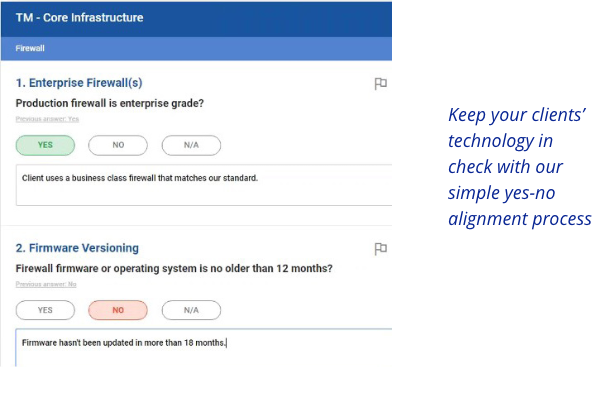
The Essence of vCIO involves building strategic relationships and not gathering technical information. Digging for information as a vCIO indicates a non- prioritized TAM. Focus on business goals, prioritizing high- value tasks, and objective standards. Aim to deliver a consistent process across all clients.
Alignment information from the TAM delivers results through the review of business impact. Results are the measurement of customer relationships, not talking about outdated technology. Decision makers will want to include you in steering meetings as a trusted business partner.
Section 6
The Virtual CIO Role
The vCIO process digs a bit deeper into the structure and workflow of the role. Relationship management, client education, and life cycle budgeting are some of the responsibilities. Many other topics encompass the position and are necessary for enhancing Technology Success.
Relationship Management
A positive strategic relationship with client decision makers requires regular reinforcement. A vCIO is a business partner the client should raise issues when needed. Issues should be non-technical since the vCIO is not a technical support resource. A business relationship is not established if a vCIO is performing technical support.
The bond of a vCIO and decision maker differs from a generic technology consultant. The vCIO handles management of proactive and reactive activities. Proactive items include business impact and client strategy. The client initiates reactive issues through questions, concerns, and opportunities. The role is a balance between offense (proactive) and defense (reactive).
Understanding Their Business
A function of vCIO is to have a complete mastery of a client’s business use of technology. This goes beyond basics including industry trends, business applications, or compliance requirements. This implies a vCIO needs to understand what the client does, how they do it, and what their technology does for them.
A focus on appreciation of technology is an important first step to client proactivity. Education on self- prevention of problems creates a sustainable environment. There are clients who will see technology as a convenience for them, but not rely on it. Examples of this are desktop computers, email, and accounting software. It is convenient for them to use, but business won’t come to halt if something happens.
Other clients will use technology as a functional dependency. Heavy dependence on cloud services, file sharing, and virtualization can disrupt business operations. Guaranteed uptime is critical.
Client Education
A perk of having a business relationship with a client is the ability to educate them in various topics. They can range from security, company goals, compliance, and new technologies. This is not the opportunity to lecture them on what they do right or wrong. It keeps them aware of trends and shows you are making a concerted effort to stay on top of their best interests.
Education informs clients of technology, products, and services before the need to buy. If a new service may benefit them, it is best to inform them in advance before the next budget period. When the time is right to present the solution, they are already aware of the benefits.
Standards Alignment
Reiterate to clients that Technology Success is not only about tickets. They will grasp the significance of standards alignment and how to prevent problems. A vCIO client meeting ensures the client understands misalignment and where to prioritize. This falls into two categories:
- Informational: Creates awareness using proactive standards alignment versus break/fix ticket support.
- Expense decision: Involves a fiscal component for remediation.
Life Cycle Budgeting
Budgeting for the short and long-term gives insight into planned expenses. Business owners prefer planned expenses when appropriate. It is the responsibility of a vCIO to plan life cycle budgeting 1-3 years in advance. Neglecting known hardware and software upgrades will break the trust relationship. Life cycle budgeting requires reinforcement year after year to the decision maker. Schedule annual reminders for hardware, software, or services and the need for replacement.
New Technology Planning
When a client contemplates new technology, the vCIO becomes a liaison. A successful project must consider expenses, infrastructure requirements, downtime, and scope of work. The need to see value early in the decision-making process prevents unforeseen issues.
Excitement may engulf the client and force them to purchase on their own. This creates a problem: proper planning or budgeting was not involved. A well-established vCIO relationship prevents the client from making their own IT decisions. If they make choices without consulting a vCIO first, there is a breakdown in the process.
Roles and Responsibilities
Meetings have a method to discuss progress on standards alignment and operational efficiency. Administration is the planning, executing, and developing action items for follow up. Customer meetings consist of many parts and a decision maker expects preparedness.
Technology Business Reviews
Technology business reviews are a component of a client meeting. The center of the role is advocating improvements and alignment to defined standards. Support requests decline due to efficiency, uptime, and lower reactive noise. Tickets solved per month causes customer confusion since these are internal metrics. It is best to quantify loss or gain of productivity by other means. Technology business reviews cover reactive support, ongoing projects, and recommendations for further improvements. Intentions for a technology business review meeting are as follows:
- Included with monthly services: An in-person meeting reassures the client you care for their needs. Without a face to face meeting at least once per year, the relationship will dissolve.
- Discuss upcoming projects: When a client allocates a budget, the vCIO lines up a plan for project implementation.
- Review of reactive tickets: Review reoccurring problems reported to Service Desk with the customer. The vCIO should prepare recommendations for permanent resolutions.
- Review standards and technical alignment: The TAM produces a technology review to the vCIO for client discussion. A decision maker will approve a plan of action to resolve standards out of alignment.
- Metrics on proactivity: Glance over numbers showing how standards and alignment prevents issues. Do not spend much time explaining numbers to the decision maker as this will cause confusion.
Topics above are an example of what a customer expects to hear during a review meeting. Always plan out subjects ahead of time for a proper meeting structure. Time is precious so do not spend considerable time focusing on a single item.
Creating a Meeting Agenda
Meeting agendas will contain a standard list of items to address. It is best to have an agenda created and sent in advance for review. Allowing enough time to review items you have added lets them prepare on their end. The complexity of the discussion will determine how far in advance to send the agenda.
An important thing to mention about a meeting agenda is perspective from the other side. A client may have concerns they want to bring up while meeting face to face. Prior to meeting, draft a questionnaire looking for input on topics and send it to your contact. These steps are essential in maintaining a positive business relationship.
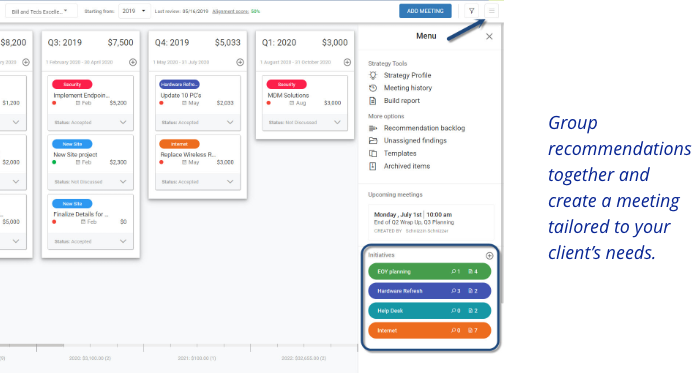
Action Items & Follow Up
At the conclusion of a meeting, there will be takeaways to address. A list of action items stems from ‘to do’ items brought up in the discussion. This is a normal byproduct of talking points branching off into other items. Action items will have the following traits:
- Items discussed by the vCIO and the client.
- Next steps for vCIO and client handling action items moving forward.
- A set date for follow up with a status or plan.
- Solution or resolution.
Action items are not usually solved at the meeting. Consulting the other delivery areas may be necessary for resolution. List action items and check them off when completed. Updating the status should trigger a notification of the status to the client. Over communication is not a bad thing, though flooding them with emails is not advisable. When possible, group more than one update per call or email.
Setting Meeting Patterns
Hold formal meetings with decision makers to present recommendations and review concerns. Meetings scheduled one year in advance give the vCIO and client ample time to prepare. Also, advanced notice limits rescheduling due to last minute changes on their calendar.
There is no formal process for scheduling meetings per year. It is best to create a guideline across clients. Determining annual onsite meetings is not the same for every TSP. MRR is often used as a point of reference in determining meeting frequency; however, this methodology is not linear. A customer paying twice as much may not require twice as many meetings.
For this example, we will use variables from the TruMethods training videos. Before laying this out, the following numbers should be used as a guideline:
- An average vCIO can handle 40 clients with a total MRR of $120,000.
- Dividing $120,000 by 40 will yield a value of $3,000 per client to use in this example. In the real world this value may fluctuate between $2,500 and $3,500 which is why $3,000/client is an average.
- Each client is assumed to be of average size with medium IT complexity (using the math above).
Communication with clients is through many media: in person, over the phone, video conference, or email. While the method of contact with clients is case by case, the frequency should be from the math above. Terms used for meetings can be:
- Quarterly meeting: A formal onsite visit to meet with a decision maker four times per year. An average MRR of $3,000 per client has at least one formal visit per quarter (based on average guidelines).
- Unique touches: Some form of contact or communication with a decision maker. This can be a phone call, web conference, online meeting, or an email exchange. It is a proactive technique the vCIO engages in to remind the decision maker of their involvement.
The onsite meetings and unique touches are not linear. A customer who pays two or three times more than the average may not be a justifiable reason to meet more often. A vCIO must consider size, complexity, and needs when determining how often to communicate.
The table below is an example of how the math and logic above comes into play. There is a breakdown of MRR, client size, complexity of environment, and unique touches per client.

- Company A is an average example of these guidelines. An average size customer with medium complexity would receive one quarterly onsite meeting with at least one proactive unique touch per month.
- Company B has more than twice the average MRR and users, but a low complexity environment. This example shows that more MRR does not always cause more unique touches.
- Company C has half of the average MRR, but the complexity is much higher. Customers that fit in this range may need more unique touches even though they pay less than average.
Customers who understand why technology is vital to business should have no issue with this meeting schedule. These guidelines will be different for every TSP. It shows insight into the process and helps provide a starting point for prioritizing clients.
Collecting and Compiling Metrics
It is one thing to tell a client they are doing well and another to show them. Metrics provides an important aspect of managed services. Customers can see how investing in technology decreases Time-to-Value. It is best to focus on metrics that concentrate on areas of concern or points of interest. Metrics preparation can be a set of guidelines that vary from customer to customer.
Number of Meetings
Keeping track of meetings is good practice. Show clients how getting together is critical in the decision-making process. Review previous meetings, takeaways, action items, and follow up and conclusion. Begin by summarizing the resolution of items from the last meeting.
Budgets Completed
The completed budget count shows the funds required to keep their business operational. Easy to read proposals with accurate budgeting gives insight on yearly spending. Budgeting is usually broken down into short- and long-term projects.
Short-term budgeting incorporates items that need immediate replacement like keyboards and mice. Stress the need for available reserve funds for peripherals. Long-term budgeting refers to projects that may be one to five years away. A TSP is aware when hardware or software needs replacement. Through the effective use of documentation, instant retrieval of information is possible. A customer aware of expenses makes spending easier to digest with advanced notice.
Support Requests
A simplified collection of support tickets is an excellent idea for customer meetings. Solved support requests can display how proactivity is benefiting their business. But it may show not being proactive as promised and requires improvement. Metrics the customer needs to be aware of:
- Low call volume indicates fewer users calling for support. Providing a list of users provides a training opportunity for those who call in often.
- While phone calls is a quality metric, it can be beneficial to show numbers of tickets created in your PSA. Break them down into user-requested support and automated resolutions. This demonstrates issues resolved behind the scenes.
- The frequency of similar problems is a reason for an alignment review. Revealing recurring problems to the customer and the recommendation helps justify the expenditure.
Escalated Issues
Support Desk will handle most issues, but high tier technicians may assist if needed. It is good to note metrics on escalated issues:
- Escalated items can determine if a customer’s environment is out of alignment.
- Issues that need frequent escalation solidify a case for a permanent solution.
- Customers should be aware of complex user requests. Training and awareness may prevent support ticket frequency.
Technology Reviews Completed
Completed technology reviews maintain customer alignment with technical standards. Completing technology reviews before a vCIO meeting is part of the function. Metrics on alignment reviews completed show they are being completed.
Each meeting should check previous technology reviews and reiterate recommendations or projects. It will provide insight into what occurred since the last session and correct lingering problems.
Strategy and Budgeting
Standards and Alignment is the process of creating a collection of best practices. Using standards to perform technical reviews will determine a customer’s alignment with them. Strategy explains the importance of technology and its role in customer success. Components of Strategy consists of:
- Business impact of misalignment: The necessity and importance of alignment while translating technical information into business language.
- Business goals for the client: Go beyond technology and understand a customer’s needs and wants. Asking the right questions will determine business goals.
- Strategic Roadmap: Recommendations stem from business impact assessments and long-term goals.
- Long-term Budget: A budget agreed upon by the client workable for the short and long-term (1-3 years on average).
- Client feedback: Feedback improves service delivery and fills gaps that prevent World Class performance.
Business Impact
Misalignment of standards affects a customer’s business. Some examples can include:
- Productivity: Failure of hardware and services may cause employees to work at partial efficiency or not at all. Aligned standards make it easier for customers to do everyday tasks.
- Business risk: Viruses or stolen information may be a security flaw. This could lead to downtime or reduced employee productivity.
- Opportunity costs: Downtime and loss of productivity become missed revenue opportunities.
Decision makers may not be technical or understand how their IT environment works. In a strategic relationship, you help them understand by breaking it down into non-technical language. To connect on a level anyone understands, be sure to:
- Use clean, non-technical language when explaining the technology. If the decision maker is not technical, it is best to keep details as uncomplicated as possible.
- Make the connection between their technology and business goals. Explaining how the technology works from a high level will not go over well. A conversation is more relevant when it affects their goals, growth, or ambitions.
- Present concise technology summaries while detailing your recommendations and potential business impact. When presenting recommendations, choose a readable and well laid out format.
Business Goals
Understanding a client’s business goals builds the strategic relationship. A vCO’s recommendations have less value and add non-recurring revenue with no reduction in support costs. Why a customer is in business, their goals, and setting a 5-year plan signifies a genuine relationship. Clients will place higher value around meetings because the focus is on managing outcomes. The first step is to gain a comprehension of a customer’s business:
- What market do they serve: Do they concentrate in small, medium, or large markets? Is their service offering niche and why do their clients buy from them? Interpreting a customer’s business connects technology with the markets they serve.
- What is their position in the market: What percentage of their industry do they have control over? Are they local, national, or international? Determining the scale of operations allows proper planning to support that environment.
- How do they make money: Are they a volume or margin business? Low margin sales rely on volume while high margin may not. High margin items sell less volume compared to low margin items.
- What is their sales and marketing strategies: What type of sales force is in place to find new customers? Do they only market on social media, traditional media, or both? Is it in-house or outsourced? How customers advertise and market their product can hint to their technological competence.
- What is their business environment: Is the company experiencing growth, shrinking, or stagnant? How do they hang on to customers and how well does it work? Is their market expanding or contracting? Market conditions will dictate alignment status and how to scale recommendations.
- What are their short- and long-term business goals: Are there any plans to grow company sales? Are new products, services, or clients on the horizon? Introducing new products and services can alter alignment and which recommendations take priority. A customer may not have the infrastructure to handle new users or support requests.
- What are their biggest risks and obstacles: What is the company culture, purpose, and core values? These features attract the best talent, retain top employees, and improve company morale.
Interpreting business operations is a significant amount of work, but the knowledge attained improves the client relationship. Gathering this information provides advantages to both entities:
- Trust the process to learn about the business. All businesses are not created equal. Understanding how one business operates may not relate to others in the same industry.
- You get to establish connections with awesome business people. Decision maker relationships strengthen service quality due to the level of trust gained.
- Those considered less-awesome receive the help needed to get them going and keep their business successful.
- Clients will view the TSP as a strategic partner. Building trust and value is an inclusive invitation to their business decisions.
Strategic Roadmap
A business relationship produces a strategic roadmap for decision makers. Organizing recommendations into a plan is key to developing a roadmap. A plan contains projects that enable clients to align with a defined set of best practices. A strategic roadmap focuses on technical alignment and business goals. Details to consider when presenting solutions to clients include:
- Recommendation: What is the recommendation you are making and how does it solve a problem? Presented solutions solve standards alignment and help clients achieve business goals. Do not install technology for the sake of the sale, but ensure it is a win-win for both client and service provider.
- Budget: How much money is set aside for a project? Proper budgeting allocates funds in advance. While break/fix issues may occur at random times, project planning occurs ahead of time.
- Time frame: How is time allocated towards the completion of a project? An established time frame is critical, especially when expecting downtime. Notify a customer of all planned outages that affect productivity and business operations.
Encourage a customer to view technology as an investment after reviewing a roadmap. Employees expect reliable technology to get their work done and remain productive. Allowing IT infrastructure to crumble shows negligence towards business goals.
Budget
A budget is as equal in importance to recommendations and a strategic roadmap. Planning and allocating funds ahead of time prevents surprise expenditures. A budget should always be:
- Planning expenditures for end-user/infrastructure technology 1-3 years in advance. Large clients may need future budget planning of 5 to 10 years.
- Broken down per month or quarter. Granular budgets make planning for items more manageable.
- Include capital expenditures like servers and network equipment used to maintain business operations. Some local and state governments offer tax-free incentives for capital improvement projects. This is to encourage business owners to invest in their business.
- Have a timeline written showing what funds are being spent and where. A timeline with estimated spending gives the client more confidence. Advanced awareness of projects and their costs puts a decision maker at ease.
Client Feedback
Feedback from customers is vital to gauge how well service delivery is performing. The phrase “if no one complains then nothing is wrong” should not apply. Frequent checks with the customer for feedback should occur on a routine basis. Track feedback for various reasons:
- Did they accept the recommendations made? If not, why? Recommendations made to a decision maker are less likely turned away. A point of contact may not have the authority to make business decisions.
- Are there any changes that need to be made? Whether good or bad feedback is being received, there is always room for improvement. Collect, compile, and analyze feedback to discover if changes are needed. Cross-reference issues with other clients to discover common denominators.
- Are there new initiatives from the meeting? A client may introduce more variables including mergers, acquisitions, or letting employees go. Roll these factors into a plan to stay ahead.
Reframing (changing your client’s frame of reference)
It is not uncommon for customers to continue in their old ways. Reframed clients understand how their previous results differ from new achievements. Reframing a client uses strategy and budgeting to align them with technical standards. The intention is an opportunity for a strategic partnership to reach business goals. A client that does not understand these concepts after reframing may be a bad fit in the coming months.
- If a client refuses recommendations or to buys their own equipment, they are not reframed. A strategic relationship relies on a decision maker trusting their service provider.
- Customers who see you as a vendor and not a partner have not bought into your company way. It is imperative to ensure the relationship is a partnership and not client-vendor.
- Reframing bridges the gap between their current solution and your results (Technology Success). A positive partnership is ideal for reframing to be a success. Without one, they cannot understand the impact of Technology Success on their business.
Standards and Alignment
A Technology Success Practice contains Technology Alignment Manager (TAM) and vCIO roles. The TAM’s responsibility is aligning customers against a set of standards. Recommendations made for misaligned items pass to the vCIO. A vCIO receives recommendations and discusses the business impact through client strategy.
Elements of a Standard
Categorization and priority define the business risk of standards. Concrete parameters using objective best practices minimizes guesswork when performing an alignment review.
- Create categories for standards ranging from email to servers to business applications.
- Specify questions for what you are evaluating to determine if it is or is not out of alignment.
- Focus on the priority of business and technical impact.
- Be specific when deciding on what to test.
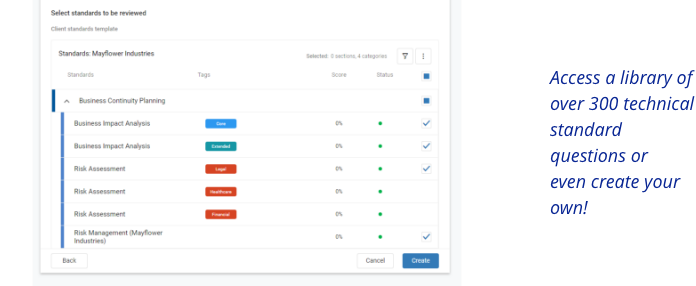
- Set a frequency rule for standards like monthly or quarterly.
- Do not leave room for interpretation and create objective questions in a yes/no format.
- Be sure configuration items are important enough to include in standards alignment.
- Why a standard exists is important information to relay to your team and the client.
Develop a List
Developing standards for an IT environment requires a starting point. The examples below are not a definitive list, but give insight on what may need to be a priority.
- Patch Management
- Windows Servers
- Cloud Services
- Desktops
- Line of Business Applications
- Backup System
- Switches
- Firewalls
- Routers
- Antivirus
- Power Management
- Disaster Recovery
- Wireless Access
Getting Started With Standards
It may be challenging to locate a starting point in the standards and alignment process. It is best to concentrate on priority areas. There are elements to consider and the list below assists with choosing where to start.
- Stakeholders, vCIO’s, TAM’s, and Support Desk have valuable input. Form a Standards Committee that meets often to create, change, and remove standards.
- Plan Standards Committee meetings a year in advance. Ensure they are set on the calendar and resources can dedicate proper time.
- Define a recurring meeting schedule for the Standard Committee to meet. Keeping best practices up to date requires constant attention.
- High-impact areas address the customer’s immediate needs. Preventing reactive service issues and lowering noise will contribute to customer success.
- It takes time to develop and refine standards into a format that covers diverse areas. Make your initial standards functional, then concentrate on refining them over time. They will continue to evolve as technology and a clients’ needs change.
An important note about standards is they are a living, breathing rule set. Standards change over time from new technology, processes, and procedures. Reviewing standards at least once per year keeps them up to date as the industry shifts. Learn from your mistakes by rolling these variations into your standards library. Small improvements over time will lead to big change.
A World Class TSP includes incorporating Technology Success to drive standards and technical alignment. Otherwise, you’re selling services centered on convenience rather than necessity. The vCIO plays an important role in customer alignment even if not involved with their development.
Defining Standards & Best Practices
Standardizing your customer’s technology without reference to a regulatory body is difficult. Standards modeled after best practices show customers consistency in the technology industry.
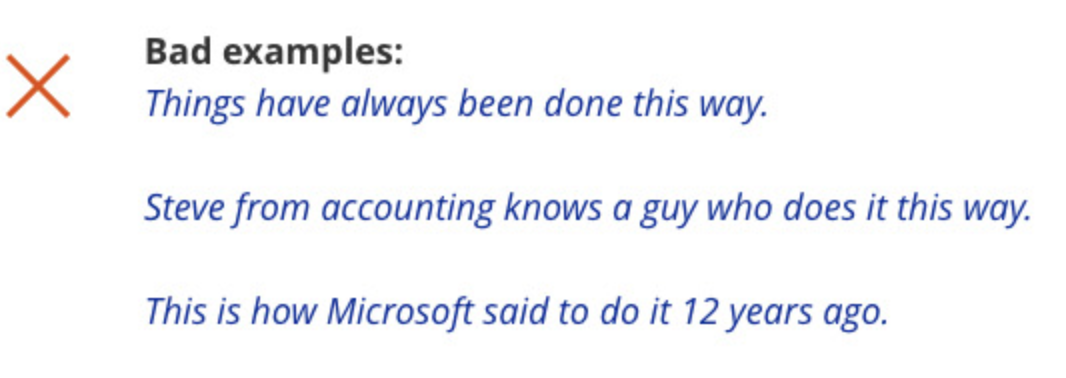
Handed down knowledge may use information no longer relevant. Following transmissions cause loss of the original solution. Personal opinions, shortcuts, and misinformation trickle down with each passing message. A manufacturer will revise best practices when their product or service changes.
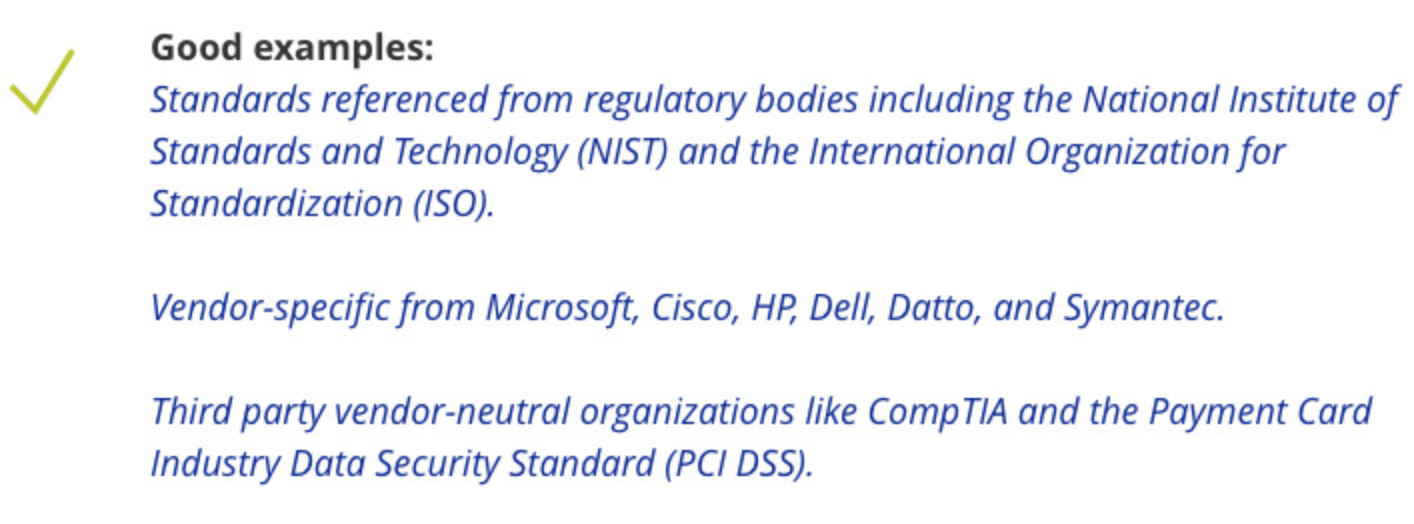
A prepared IT partner showing awareness of industry trends will earn a customer’s trust. Rather than assuming, always reference an authoritative body on best practices.
Section 7
Building Strategic
Relationships
Virtual Captain Obvious is a common role used by IT service providers today. A client has a problem, it gets fixed, and you do not hear from them until another issue occurs. This model does not generate monthly recurring revenue nor build a strategic relationship. Building a strategic relationship carries more weight than a trusted adviser can offer. Benefits include Business Impact and Client Strategy through Standards and Technical Alignment.
The strategic relationship process is divided into three major areas: Discover, Plan, and Present. The process assumes the vCIO is in communication with a decision maker. Relationships are not built with personnel accountable for the day to day operations.
Discover
The discovery process is asking the right questions about the direction of a customer’s business. Meeting with decision makers is easier to determine goals, budgets, and business constraints. The intention of discovery is to gain insight and work that information into a plan. The discovery phase is crucial for new customers to collect information missed during onboarding.
- Business Canvass: Build a Business Canvass of information like stakeholders, revenue streams, and costs. Other items include opportunities for growth and challenges that prevent achieving specific goals. Constructing a client profile of their customers and the market contributes to a viable strategic plan.
- Ask business questions: Asking the right questions will unlock the potential for building a strategic plan that works. A point of contact is unable to provide the same answers as someone who makes decisions. Some examples include:
- Assess technology risk: Leverage technical alignment to identify business risk. Technology and compliance misalignment will distinguish the high and low priority areas.
- Compliance and Regulations: Always perform due diligence on compliance and regulations. Most industries must comply with an established government or private rule set.
Plan
The next phase summarizes business goals and technology risk into an actionable plan. Translating technical information into business goals and recommendations is critical to this process. Planning lays out a path forward for each client. Priorities and budgets allow the client, with the guidance of a vCIO, to make a decision. Advocating for the client prevents the vCO trap.
Prepare a visual plan broken down into quarters. Distributing priorities into quarters (or across many quarters) simplifies budgeting. It is important to get an idea of the customer’s spending limits during the discovery phase. Gather a spending history of IT expenditures since the last major upgrade. A history will help gauge how often IT investments occur.
An area most businesses tend to neglect is compliance. The activity of storing, processing, and transmitting personal information has increased. This has led to the mainstream recognition of private and government compliance. Businesses must take planning and budgeting into account when compliance is necessary. Examples include the Health Insurance Portability and Accountability Act (HIPAA) for covered entities and business associates in the medical field or the Payment Card Industry Data Security Standards (PCI DSS) for businesses who accept, store, and transmit credit card data.
Key takeaways for the planning process:
- Translate technical information into language the decision maker can understand. Decision makers are seldom tech-savvy and may not care how underlying technology works. A client’s concern revolves around Time-to-Value.
- Prepare a visual plan to share with a client. Make an attempt to lay out your plan at least one year in advance separated into quarters. If an initiative takes longer than one year, be sure to extend your plan to show the scheduled end date.
- A completed discovery phase will reveal technical risk related to compliance or regulations. Accounting for compliance and regulations is essential for budgeting and long-term planning.
Present
Once a plan is complete, the next step is to achieve consensus on a path forward. When presenting a plan to a client, be sure to avoid selling the recommendations. Strategic consulting presents the logical business or technical initiatives and is not a sales call. Customers who are unwilling to make a commitment may not be the right type of client. Be sure to receive acknowledgment that a decision maker wants to move forward on recommendations. Sorting out a budget may take time, but a commitment to recommendations is a top priority.
It is important to be consistent with the presentation process across clients. Include the most important aspects of delivering a plan to the decision maker.
- Present the plan in person when possible. Prevent reviewing a plan over the phone or sending a PDF over email whenever possible. Face to face conversation carries more influence and solidifies a strategic business relationship.
- Deliver an organized list of priorities to the decision maker. The discovery phase may have discovered improvements and recommendations. It is best to rank your findings and present those to the customer first. Presenting all findings at once can be overwhelming and give off a sales vibe.
- Show a clear description of the project, budget, and timeline. List out initiatives with a small description and a potential timeline. Transparency with information gives a client more assurance for their return on investment. Provide an estimated project cost and split the implementation over many months if necessary.
- Emphasize an initiative’s importance if it relates to compliance or regulations. Complying with federal or private regulations needs significant work. In some cases, businesses are not aware they must comply or are even out of compliance. Emphasize the importance of each recommendation as it pertains to becoming compliant.


TruMethods was launched nearly 10 years ago by industry leader Gary Pica with the purpose of sharing a proven framework to help MSPs achieve more recurring revenue sales and industry leading profitability. TruMethods combines training, community, software and peer to help MSPs reach World Class results. Nearly 20% of the MSP Mentor 501 are powered by the TruMethods Framework.
INTERESTED IN BECOMING A MEMBER? Visit our website www.trumethods.com
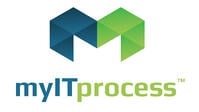
Today’s MSP marketplace isn’t about just providing products or services. We’ve built the software that offers your clients value they can’t afford to lose by providing a strategic outlook on their business. Unlock the power of myITprocess and combine standards, alignment and strategy to supercharge your MSP.
WANT AN EXCLUSIVE LOOK? Request your live demo at www.trumethods.com/demo
